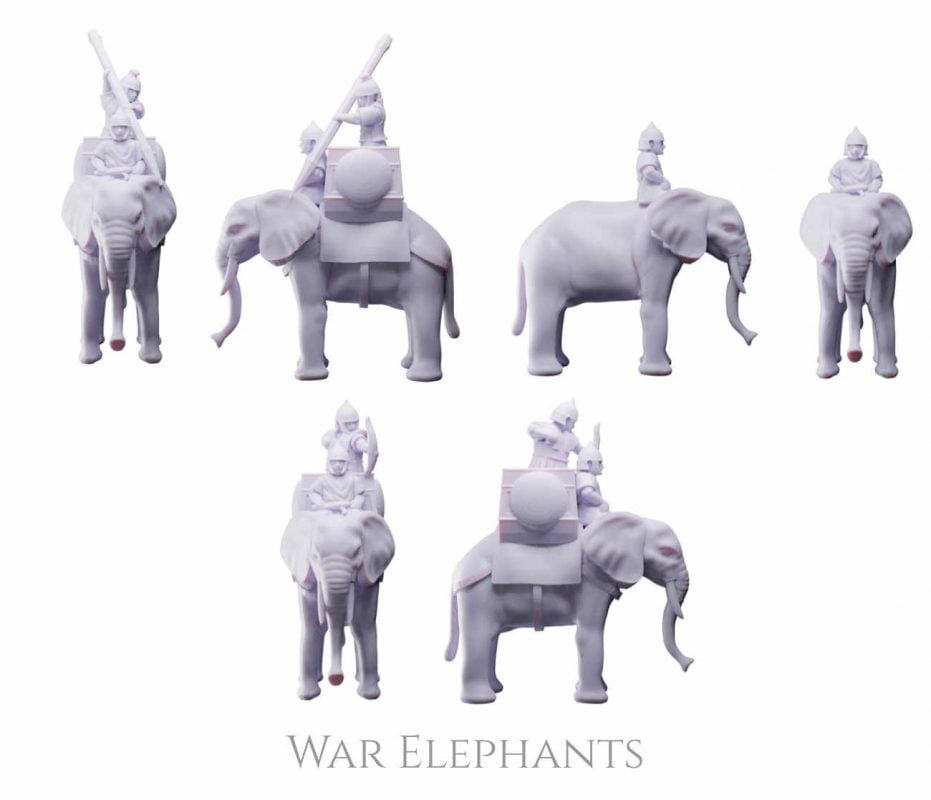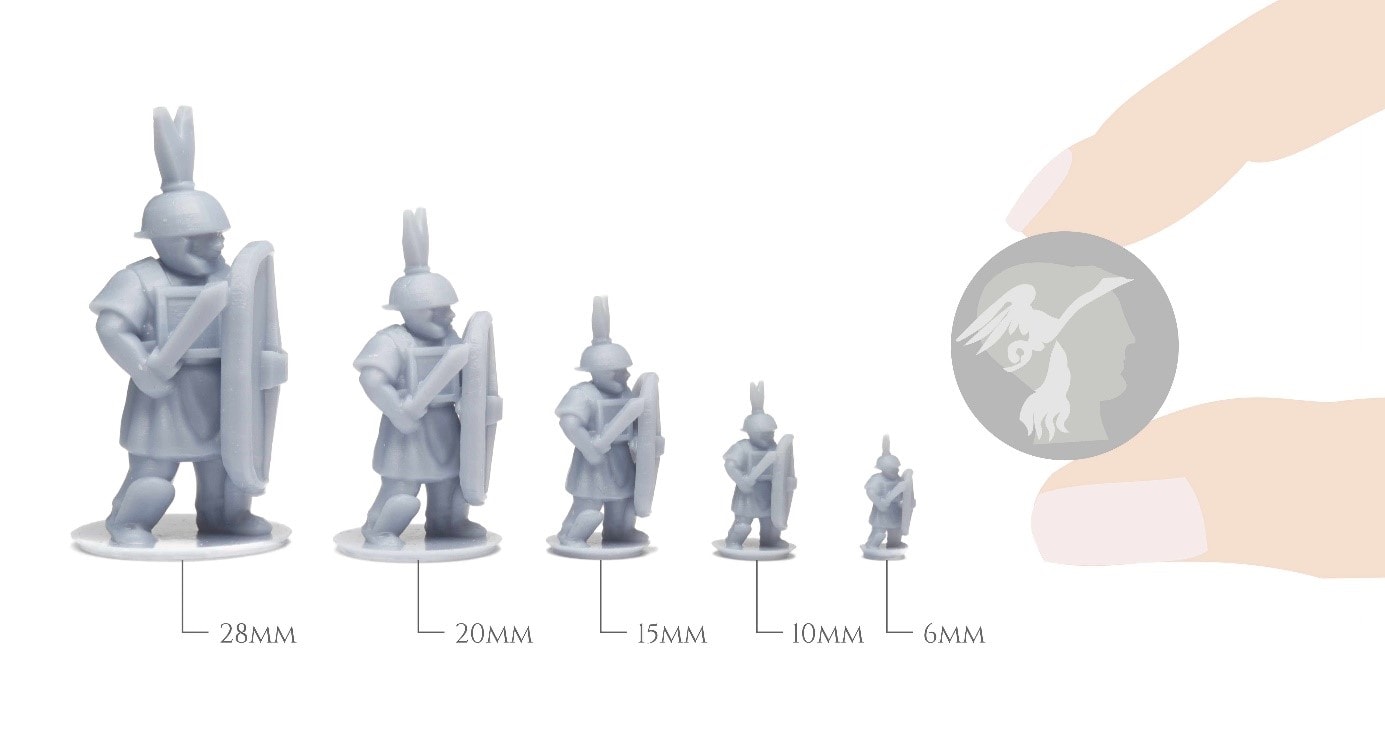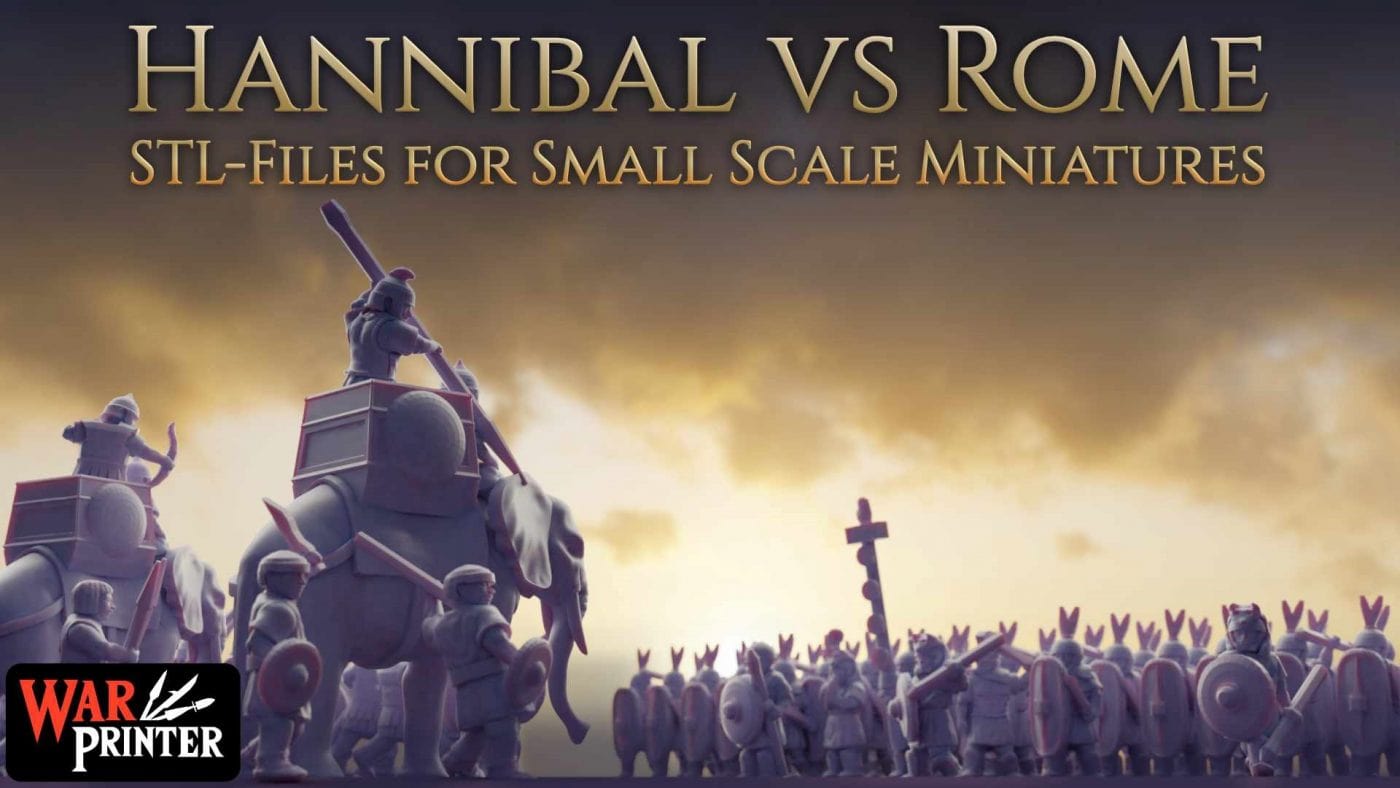Hannibal vs. Rome: STL-Files For Small Scale Miniatures
At the beginning of January, I tried to order some miniatures in Great Britain. They arrived in Germany quite quickly but have now been stuck at customs for 5 months already. Seriously, we are completely cut off here! With my collaborator, we wanted to replay the great battles of the Punic Wars. Since we are enthusiastic 3D modelers anyway, we decided to model and 3d-print the miniatures ourselves rather than risk them getting stuck at customs as well.
When we shared the first printed STL files, we got so much encouragement that the project became bigger and bigger. Now we want to realize more stretch goals with you via Kickstarter. After that, the whole range will be available here at Wargaming 3D!
Ancient Rome was on the brink of destruction
The Second Punic War saw the rising Ancient Rome pitched against her most dangerous enemy yet. The Carthaginian general Hannibal crossed the alps and attacked the Romans in their home territory. Although Hannibal’s army was outnumbered and cut off from reinforcements, he managed to wage war against Rome for more than 10 years. With this range of miniatures, you can re-fight this epic campaign. 3d-print your own army of Ancient Rome and Carthage and lead them into battle on the tabletop.

What were the Punic Wars really like?
We believe that many Punic Wars models you can buy correspond to an older state of research. Even in museums, reconstruction drawings are sometimes adapted to the common images we have always had of the past. Our miniatures are not free of this either, but we have tried to make a few things more authentic.
An example of this are the war elephants that crossed the alps with Hannibal’s army. Most of the time they are depicted as real monsters with a big tower on their back in which several soldiers can sit or stand. In fact, such elephants existed at different times in India and the Middle East. However, the Carthaginians did not have access to the elephants from Asia.
They used now extinct North African elephants, which were more closely related to today’s African forest elephant. Like those it was significantly smaller with a shoulder height of about 2.5 m. We therefore consider the theory that without the magnificent spire it was more likely to have been an agile line-breaker than a fighting platform. Of course, some players might disagree with this theory or prefer a more cinematic look for their army. Therefore, we now have both variants of war elephant: A more realistic version with only a rider and two versions with small turrets.

Why new STL- Files?
How well can the small models be printed in the SLA printer? The results from the 3D printer are certainly not as good as a resin or plastic cast. The models are always a little softer and have slightly visible steps when you look at them very closely. I am a big fan of 3D printing and love the flexibility and speed with which I can “conjure up” figures. In the realm of small scales, however, it is a very different story.
We know some good small pewter figures but there are limits as to what can be done with modeling and casting. This often leads to parts of figures not being well defined. You often don’t know which color has to go in which area of the figures.
On the other hand, you cannot just go print the STL files of larger figures smaller, because they would be too fragile. Most of the models you get on Thingiverse for small scales are therefore built from simple basic shapes (blocks and cylinders). We have now developed STL files for figures that are well defined, but still stable as 6mm figures and have enough detail to also look very good as 15mm figures. 10mm is probably the sweet spot. Larger scales on the other hand probably look a bit too chunky. But that‘s a matter of taste ????.
Here you get your free test miniature:
This is where our miniatures will appear after the Kickstarter:
Support the project:
Stay up to data:
